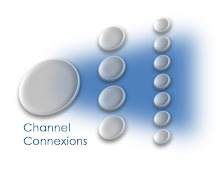Unfortunately, it seems that a lot of creativity has disappeared from co-marketing programs over the past few years. Perhaps companies are reluctant to continue to invest in programs where the return on investment is difficult to measure during a tough economy. Whatever the reason, the lack of new collaborative ideas has caused two things:
- Co-Marketing programs do not offer companies a competitive advantage. They are table stakes, but not game changers.
- There is a great opportunity for a company to change the rules and reset the playing field.
The basic idea behind co-marketing is for the vendor and channel to jointly invest in programs that will create demand and increase sales for a particular solution. To accomplish this, vendors establish a funding mechanism, typically based on a percentage of revenue, that can be used by the channel partner to engage is demand generation programs. Since the vendor is funding the efforts, they typically reserve the right to approve or decline specific initiatives. Sometimes, there are pre-approved programs that can be used without pre-approval.
The Market Development Funds (MDF), as they are sometimes called, are managed and controlled by the vendor. With sometimes thousands of channel partners, the management of the funds can become quite complicated. As such, basic programs are typically developed and reused across multiple channels.
Typical co-marketing programs include (but are not limited to):
· Lead Generation (telemarketing or DMDR)
· Deal Registration
· Co-advertising
· Sales Training
· Collateral Development
· Customer Events (typically regional or local)
· Partner Events
It should be noted that, if executed effectively, there is nothing wrong with any of these activities. The main issue is that they do not provide any competitive differentiation for the vendor. It is reasonable to assume that your competition is engaged in the same activities with your channel partner.
The other consideration in regards to co-marketing is that they tend to be generic in their application. All partners, regardless of size, location, competency, relationship, loyalty, or purchase history, are granted access to the same types of programs at the same time. It would be inefficient to have a unique co-marketing program for each and every one of your channel partners. Or would it?
If you could improve your Return on Investment, provide higher quality leads, and engage customers with unique programs, it would be possible to rethink co-marketing programs. Not only can you provide a competitive advantage, but also create switching costs and loyalty from your channel partner(s).




No comments:
Post a Comment